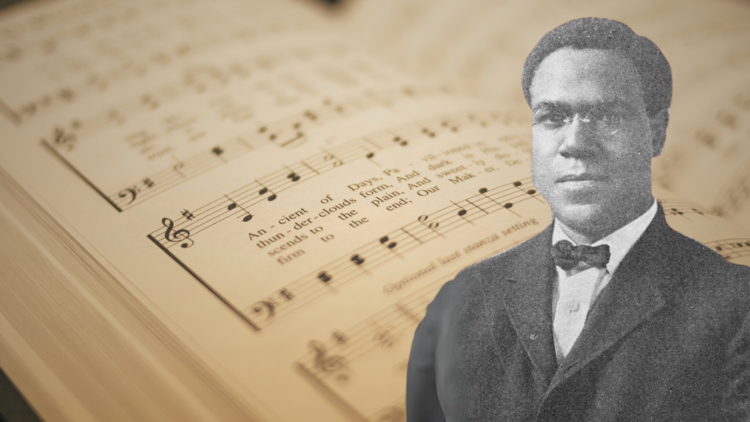Shortly after the Civil War, John Wesley Work II, a Black church choir director in Nashville, Tenn., was faced with a choice: He could either continue as a Greek and Latin professor at Fisk University or become the university’s choral director full-time. He did not know, however, that his choice would be instrumental in crafting one of the country’s most iconic Christmas carols, “Go, Tell It on the Mountain.”
For Work, the new position offered a rare opportunity. He was a musicologist, having studied first at Fisk and then at Harvard, and his scholarship focused on spirituals. These songs were composed by enslaved persons, many of whom could not read or write. Sung in the fields and small slave churches, some of them were eventually adopted by white slave owners, who brought them into their churches.
Music had always been part of the Work family. Work’s father led a church choir whose members formed the original Fisk Jubilee Singers at Fisk University. For him, a child of slavery, the Negro spiritual was a rebuttal to the enslavement of Black people, who were considered uneducated, incapable and unworthy.
For him, a child of slavery, the Negro spiritual was a rebuttal to the enslavement of Black people, who were considered uneducated, incapable and unworthy.
John Wesley Work II became the director of the Fisk Jubilee Choir of Fisk University around 1889. He wanted to teach a new audience of Black Americans the importance of their history and rich spiritual tradition. He became the first African-American collector of Black spirituals, turning what was primarily an oral tradition into a written one.
In his role as director, Work formulated the musical arrangements. The choir singers, with the help of Work’s wife, Agnes, created vocals that came to define a new kind of Negro spiritual, one that incorporated an enslaved past and a liberated present. In their deep and slow melodies, spirituals carried the pain and the shame of bondage, which several of the first group of Fisk singers knew firsthand.
During a time when travel bans prevented Black Americans from traveling far away from their birthplace, the Fisk Jubilee Choir toured the world raising money for their then-debt-ridden university. The group sailed to England to perform for Queen Victoria, marking the first time overseas audiences heard the music of American slaves.
Work went on to publish collections of his compositions, including New Jubilee Songs and Folk Songs of the American Negroin 1907. Along with his brother Fredrick, the second generation of Works kept their love and scholarship of Black slave spirituals alive in their communities.
Work compiled many songs into the New Jubilee Songs, including one of the most famous Christmas songs of our day, “Go, Tell it on the Mountain.”
Most Black spirituals originated in oral tradition, but through his extensive research, Work compiled many songs into the New Jubilee Songs, including one of the most famous Christmas songs of our day, “Go, Tell it on the Mountain.”
It is debated whether or not the Work brothers composed the actual song, but there is no doubt that they saved it from extinction. Out of the hundreds of spirituals that the Work family had archived, very few were about Christmas. “Go, Tell It on the Mountain” serves as a triumphant call to action, unlike some of the haunting spirituals that the Fisk Jubilee Choir traditionally performed, such as “Wade in the Water” or “Sometimes I Feel Like a Motherless Child.”
John Wesley Work II’s stanzas, which are based on Lk 2:8-20, have become the standard versions in hymnals around the world. The melody is similar to that of other Civil War songs (“We’ll March Around Jerusalem,” for example) from which the Work brothers may have gotten their inspiration. Aside from the account of the Incarnation, the power of the song comes from the enslaved voices, many of whom were unable to even read the Bible, and yet were able to vividly imagine the Christ Child in the humble manger.
The mountain becomes not an obstacle but a summon to reach its highest point so that a universal and inclusive message of hope and salvation can reach all those who believe.
The storyline is familiar to the Catholic listener. “Go, Tell It on the Mountain” has a rich theology, centering on evangelism and the proclamation of the Gospel message. It is rooted in the familiar biblical narrative and encourages believers to spread the news of Christ’s birth, emphasizing the joyous and transformative nature of the birth of the savior. The refrain, “Go, tell it on the mountain/ over the hills and everywhere/ that Jesus Christ is born” echoes the commandment to share the good news of Christ’s coming with everyone, irrespective of their status or position. They also remind us that our work of spreading the Gospel message does not just end “on the mountain” or “over the hills” but beckons us to all corners of the earth, “everywhere.”
The mountain is an apt metaphor for this Gospel message, as the mountain symbolizes a challenge or obstacle. In this case, “Go, Tell It” takes on the challenge of the mountain, a place of spiritual significance, reminiscent of biblical imagery where significant encounters with God occur. The mountain becomes not an obstacle but a summon to reach its highest point so that a universal and inclusive message of hope and salvation can reach all those who believe.
Beginning sometime in the 1880s, the Fisk Jubilee Choir took “Go, Tell It on the Mountain,” over the hills, and everywhere, literally. They continued touring nationwide for years, performing their full repertoire of songs.
While celebrating this Christmas, we can imagine the Work brothers, looking out at Pinhook Hill or Taylor Knob, two mountains along the Appalachian Trail that frame Fisk University’s campus, seeing the future of the Fisk Jubilee Choir and the Negro spiritual that lives on during this holiday season.
[Related: The abolitionist history of ‘O Holy Night’]
[Related: This Irish Christmas carol was once nearly forgotten. Now it’s newly famous.]








